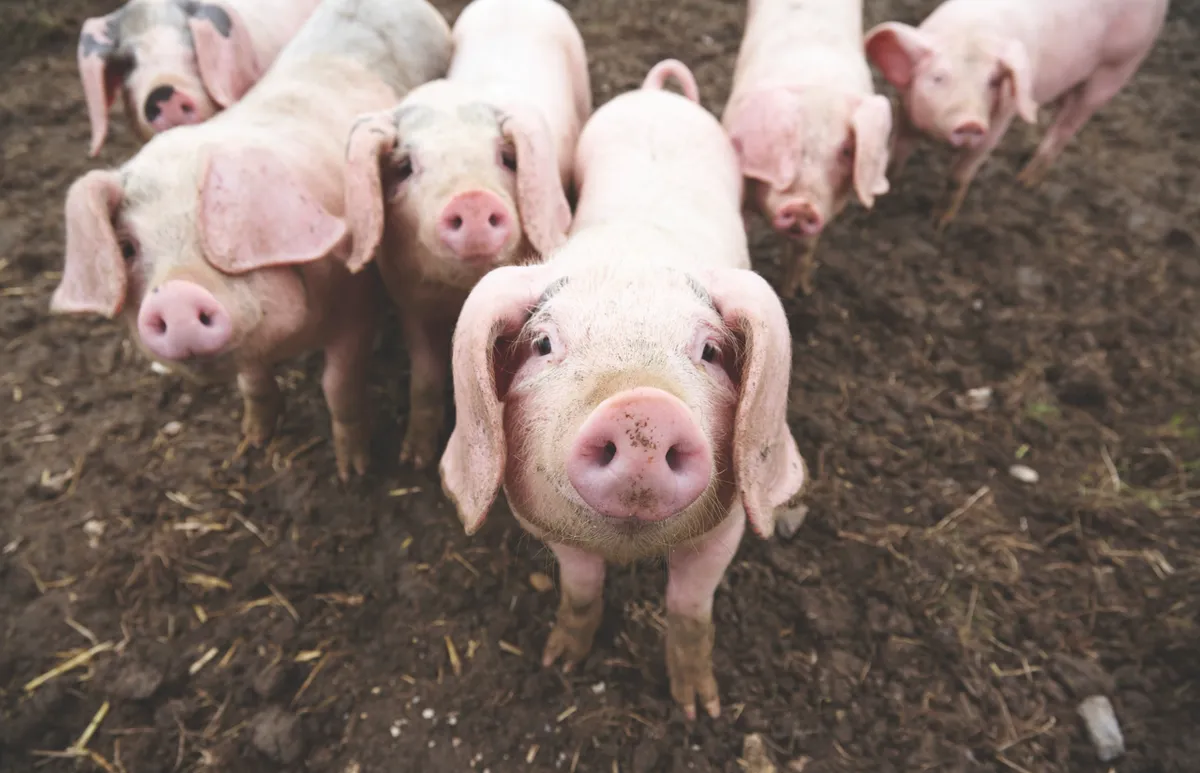Two doses of a coronavirus vaccine candidate created by UK researchers produce a greater antibody response than a single dose, a study in pigs has shown.
The ChAdOx1 nCoV-19 (AZD1222) vaccine, developed by the University of Oxford, is currently undergoing human trials and it is hoped an effective vaccine could be ready later this year.
Previous research indicated that macaques were protected against lung disease after a single immunisation.
Now the Pirbright Institute, working with the University of Oxford, has shown that two doses of the COVID-19 vaccine might produce a greater immune response in pigs and therefore be a more effective approach to developing a protective response.
Read the latest about the coronavirus vaccine:
- Manufacturing begins on 'millions of doses' of the Oxford vaccine candidate
- Oxford coronavirus trials: here's what we know so far about the COVID-19 vaccine
- Vaccine researchers looking for trial volunteers
In the study, researchers saw a marked increase in neutralising antibodies, which bind to the virus in a way that blocks infection.
It is not yet known what level of immune response will be required to protect humans against SARS-CoV-2.
Researchers said the finding in pigs is important as it suggests that two doses of the Oxford vaccine could potentially give significantly more protection in humans than a single dose.
But they said further research in humans is required.
Pigs are more physiologically similar to humans than some other animal models – for example, their body weight and metabolic rate – and are more accessible than studies using non-human primates
Professor Bryan Charleston
Professor Bryan Charleston, director of the Pirbright Institute, said: “These results look encouraging that administering two injections with the same vaccine boosts antibody responses that can neutralise the virus, but it is the response in humans that is important.
“The pig has proved to be a valuable model for testing human vaccines for other diseases to give an indication of the type of immune response induced and testing different doses.
“Pigs are more physiologically similar to humans than some other animal models – for example, their body weight and metabolic rate – and are more accessible than studies using non-human primates.”

In the research, the pigs were split into two groups, with both receiving an initial dose of the vaccine, and one group receiving an identical booster immunisation on day 28 of the study.
Professor Simon Graham, the lead author of the study, said: “While it remains to be determined what immune responses are required to effectively protect people against COVID-19, the demonstration that ChAdOx1 nCoV-19 induces both neutralising antibody and T cell responses is very encouraging.
“It is likely that a combination of these responses would act in synergy to prevent and control infection, as we and others have recently shown in the context of experimental flu vaccines.”
Read more about COVID-19:
- Male donor plasma 'contains more coronavirus antibodies' than female
- Coronavirus: Scottish sewage tested to track spread of COVID-19
- COVID-19: What happens after lockdown?
Dr Stephen Griffin, associate professor in the school of medicine, University of Leeds, said: “The work done at Pirbright is an encouraging advance in support of the Oxford vaccine on three important fronts.
“First, it has been conducted in a large animal model, namely pigs, which we know recapitulate human-like responses to influenza vaccines better than many other systems.
“Second, it shows that a second dose of the vaccine, a so-called ‘prime-boost’ strategy, gives rise to far better responses than a single inoculation, which might allay concerns arising from some of the earlier work on this and other spike-targeting vaccines.
“Third, it shows that the prime-boost strategy may well be achievable using the same vaccine rather than having to switch to an alternative platform for the second dose, which could conceivably delay roll-out of the vaccination programme.”
“Whilst these studies will need to be repeated within human subjects, and the precise nature and longevity of the responses might require further investigation, this is a heartening study that can be built upon and ideally followed by other potential vaccine platforms for SARS-CoV-2.”
How do scientists develop vaccines for new viruses?
Vaccines work by fooling our bodies into thinking that we’ve been infected by a virus. Our body mounts an immune response, and builds a memory of that virus which will enable us to fight it in the future.
Viruses and the immune system interact in complex ways, so there are many different approaches to developing an effective vaccine. The two most common types are inactivated vaccines (which use harmless viruses that have been ‘killed’, but which still activate the immune system), and attenuated vaccines (which use live viruses that have been modified so that they trigger an immune response without causing us harm).
A more recent development is recombinant vaccines, which involve genetically engineering a less harmful virus so that it includes a small part of the target virus. Our body launches an immune response to the carrier virus, but also to the target virus.
Over the past few years, this approach has been used to develop a vaccine (called rVSV-ZEBOV) against the Ebola virus. It consists of a vesicular stomatitis animal virus (which causes flu-like symptoms in humans), engineered to have an outer protein of the Zaire strain of Ebola.
Vaccines go through a huge amount of testing to check that they are safe and effective, whether there are any side effects, and what dosage levels are suitable. It usually takes years before a vaccine is commercially available.
Sometimes this is too long, and the new Ebola vaccine is being administered under ‘compassionate use’ terms: it has yet to complete all its formal testing and paperwork, but has been shown to be safe and effective. Something similar may be possible if one of the many groups around the world working on a vaccine for the new strain of coronavirus (SARS-CoV-2) is successful.
Read more:
